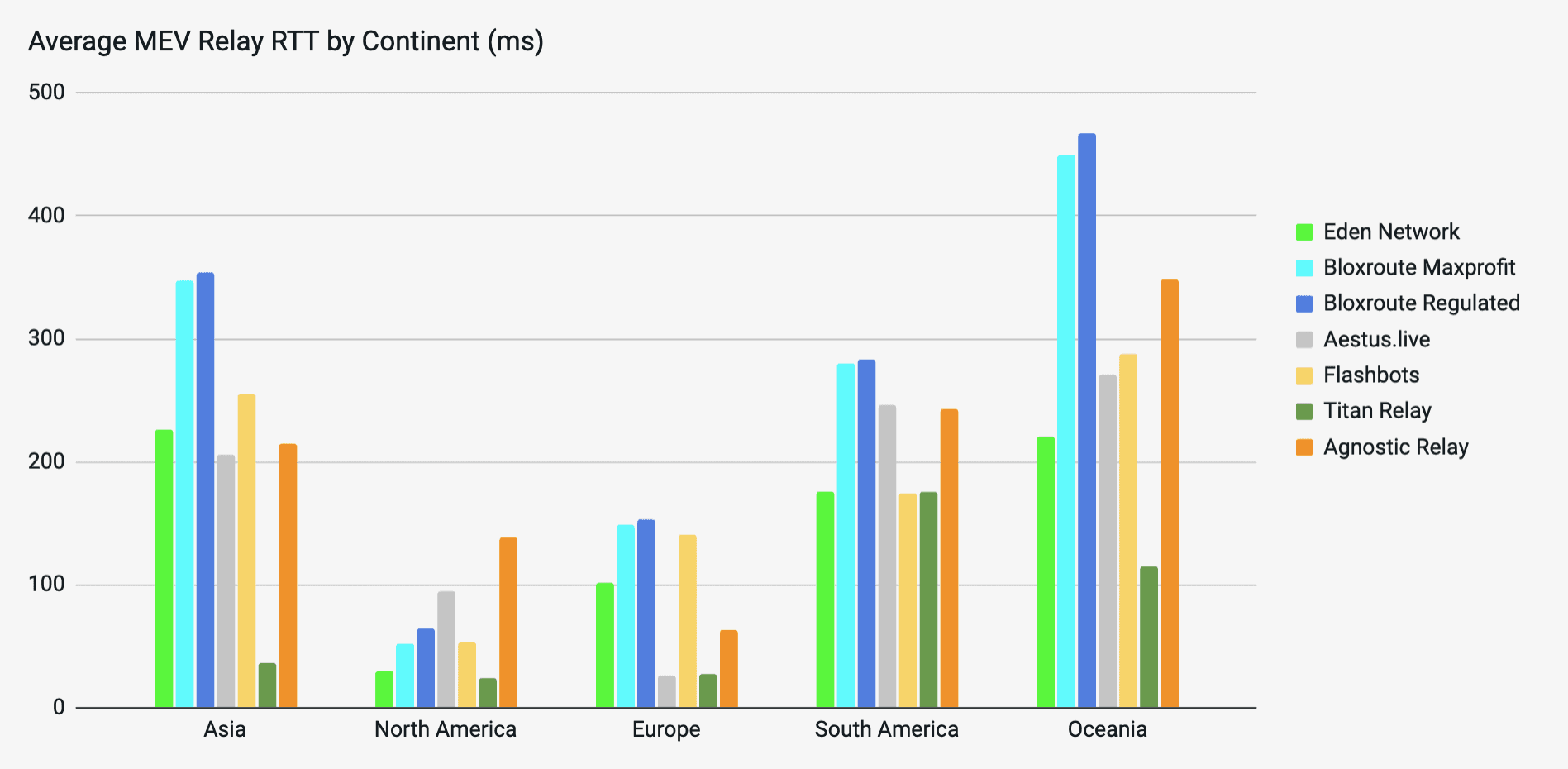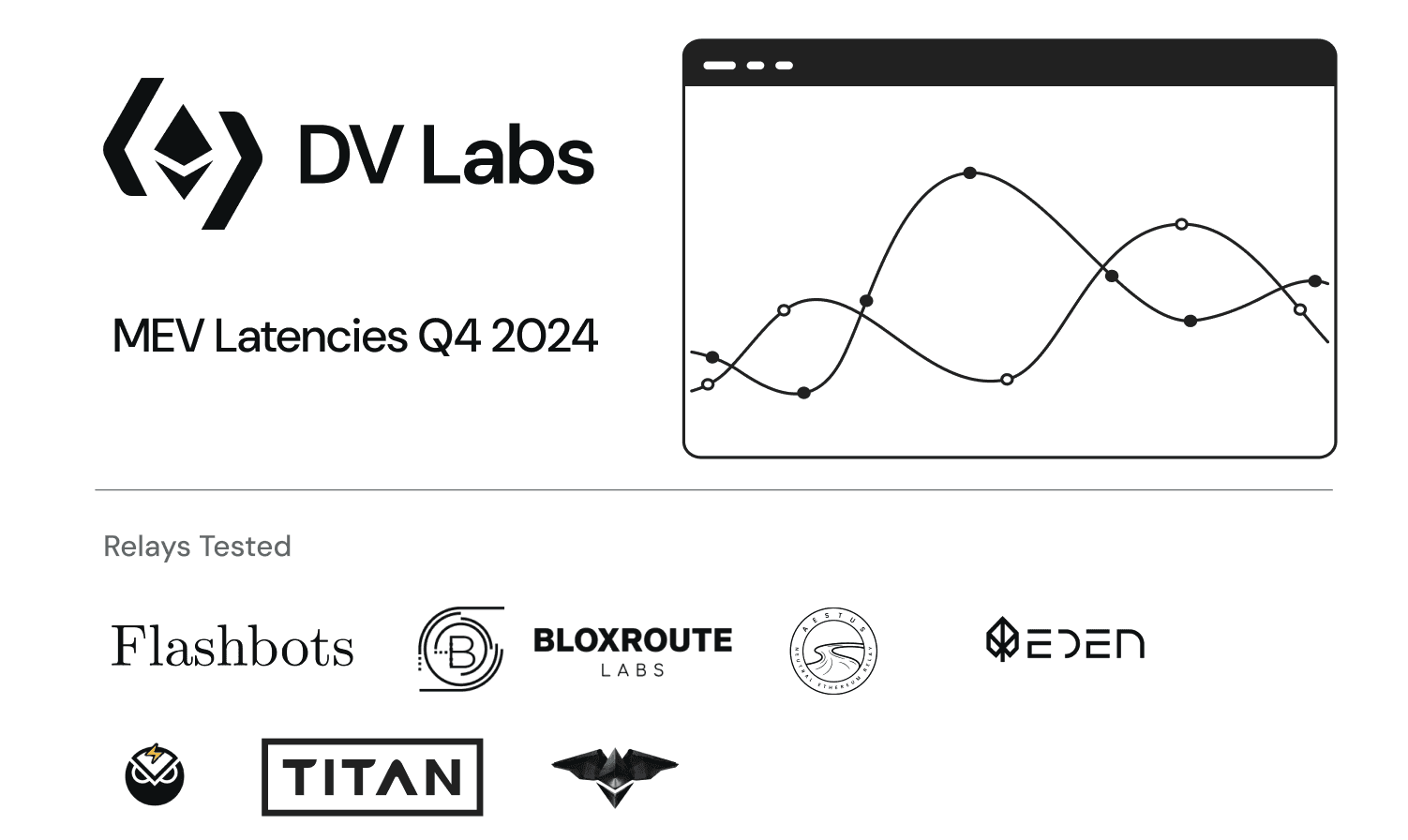Report
Testing MEV Boost Relay Latencies
23 Oct 2024
This report presents data gathered from Lido SimpleDVT operators, who tested their round trip time to a number of block relays. The data is available here. By removing the 3 highest-latency relays for each operator, time spent getting bids could be reduced by an average of 28% per cluster.
We hope that this information can help operators make informed choices of MEV Boost relays, depending on their geographic locations. The data was gathered in Q4 2024, but we will update this as we gather more data, especially to increase the number of data points in Oceania and South America, and also other relays.
Introduction
Now 6 months after the launch of Lido SimpleDVT on mainnet, over 219 operators are running within 36 Obol DV clusters, currently with over 1,400 active validators, and room to grow beyond $1b of ETH staked.
While performance of the Obol clusters has outperformed the Lido curated set, there is still room for improvement. It was identified that the time spent getting MEV bids could be reduced for many of the clusters. MEV Relays that are geographically distant from a node take longer to answer, and contain bids from longer in the past than a nearer relay polled later. A smaller number of nearby relays allows a cluster to spend more time on other parts of the flow during a block proposal opportunity.
Testing
With the release of the Charon Test Command with Charon v1.1, all operators were asked to use the test command to determine their latency to MEV Boost relays, with 172 operators passing the data back to Lido and DV Labs in September and October of 2024.
As shown in the chart below, operators in certain regions like Asia, South America, and Oceania experienced on average higher latencies than operators in Europe and North America.

For each region, identifying the best performing relays, and removing the worst performing relays, would significantly improve the region average. Eight relays were tested, so the 1st-4th best relays represented the best half of relays. It should be noted that South America only had one operator submitting test results, and Oceania only had two operators submitting data, limiting the significance of their data. Additionally, Eden Network relay is being deprecated, and therefore will no longer be used by Lido SimpleDVT operators.

Results
Depending on the location of an operator, removing the three highest latency relays should reduce maximum latency by an average of 28%. We will continue to monitor the performance of the Obol DV clusters within Lido SimpleDVT, but expect to see an improvement as operators adopt these new MEV Boost relay choices.
Feel free to see the data here. For more information about the Charon Test Command, visit our docs here or read our recent blog article. Note that you do not need to be running Charon to use the test command to test latency to MEV Boost relays! Use the test command yourself to easily determine your node’s latency to any selection of MEV Boost relays.
